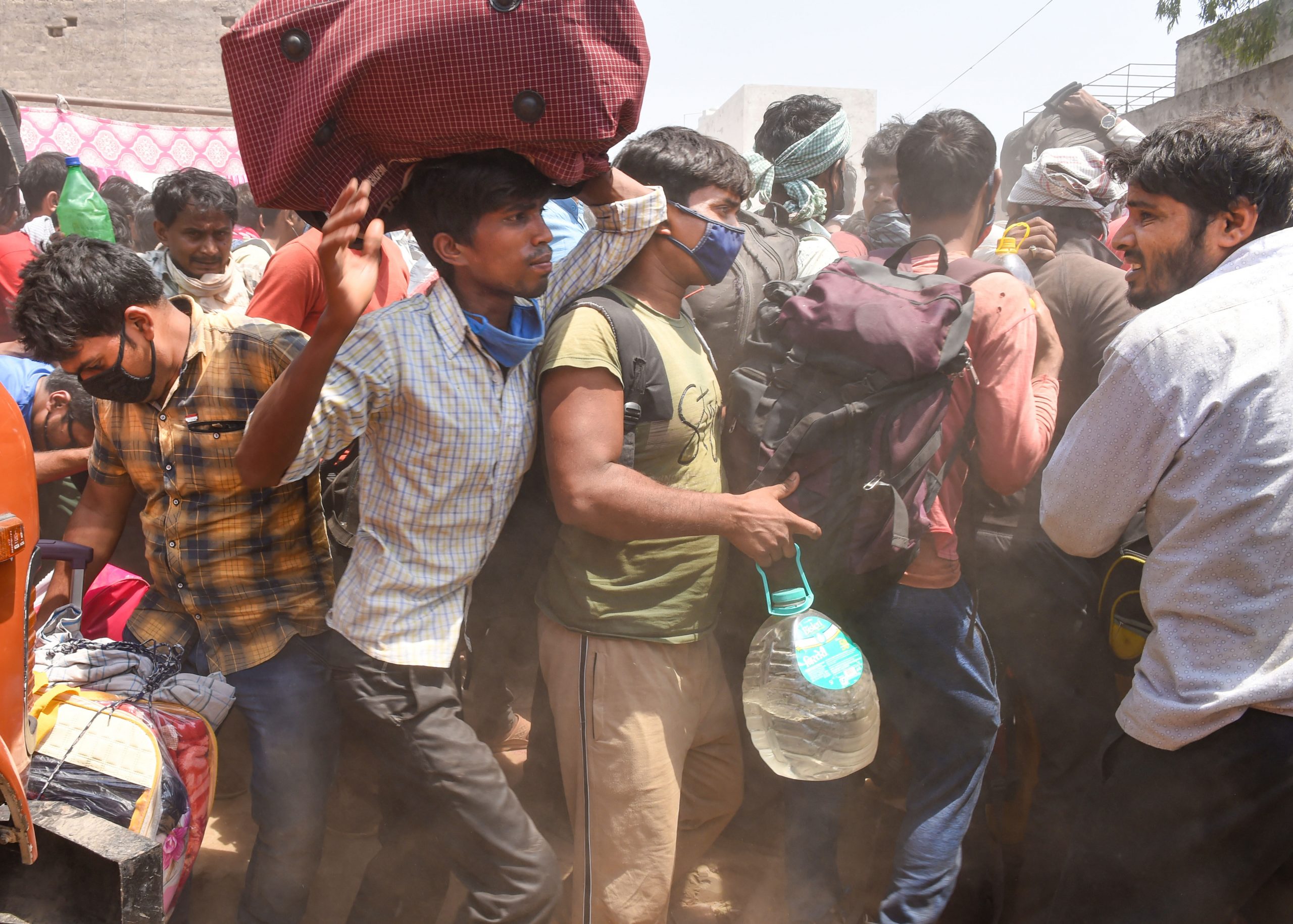India recorded its first case of the COVID-19 infection on January 31 in Kerala. The country has now emerged as the second worst-hit nation globally by the pandemic. By March 23 this year, India has registered a staggering 11,686,796 million COVID-19 cases and 160,166 people have died in the county due to the coronavirus.
Also Read | A year of COVID lockdown: Politics moved online, Twitter wars drove the divide deeper
A year ago the government announced a lockdown to prevent the spread of coronavirus in India. A year later, let’s see how what India and Indians faced this year due to COVID-19:
What was India’s initial response to the crisis?
Even though the first case of coronavirus was recorded at the end of January 2020, nothing much changed and schools, offices were going on as usual. In February, PM Narendra Modi organised a massive “Namaste Trump” event in Ahmedabad, Gujarat that witnessed a huge gathering at Sardar Patel stadium.
On March 5, after cases of two or more infections in some schools of Delhi, all the schools were shut in the national capital of India until March 31 as a precautionary measure. Other states followed. The crisis had already started to become grave in parts of the world and in the country but, even a day after the WHO declared the COVID-19 a ‘pandemic’, the Indian health ministry said coronavirus was not a ‘health emergency.’
Also Read | How risky is the double mutant variant of coronavirus found in India
However, more than 10 days later, PM Modi on March 24 announced that India is going under a lockdown for 14 days. This was followed by a Tablighi Jamaat event by the end of March, where members of the Tablighi Jamaat were communally vilified for spreading the coronavirus. The Tablighi Jamaat, who held a gathering at Delhi’s Nizamuddin in early March, which went on to become a ‘super spreader’ event.
The Indian government announced the PM-CARES Fund on March 28 to raise money from the general public and corporates to finance the COVID-19 pandemic requirements. According to reports, the fund within its first week of forming collected Rs 6500 crore, mainly from corporates and public sector enterprises.
What followed after the lockdown was implemented?
After the first and consecutive lockdowns in the nation, when all the economic activities were shut, millions of migrants were left without food or livelihood to sustain themselves. By mid-late April, India witnessed a grave migrant crisis, many people stranded in other parts of the country, desperate to go home, started walking their ways back home in the absence of transport means. As one migrant worker put it, “cities are so indifferent, we will die here. In the village, our neighbours will at least offer a roti.”
Also Read | ‘Janta curfew, lockdown, unlock’: India’s COVID-19 restrictions timeline
But, for many even this long march brought no relief. Many died out of exhaustion, heatstroke, hunger, were killed in accidents, or were mowed down by a train. On May 8, 16 migrant workers were killed after a train ran over them. According to a report published by The Wire, almost 383 people had died as of May 14 due to the nationwide lockdown. However, later in September, the Indian government told Parliament that they had no data on the deaths of migrants during the lockdown.
When were transport services resumed in India?
Even when India was in lockdown, the Indian Railways announced that it will partially resume the train services from May 12. On May 16, India surpassed China’s COVID-19 tally with the health ministry reporting 85,940 infections but by the end of that month, domestic flight services were also resumed, keeping in mind all the safety precautions. The government had slowly started to resume economic activities in India.
How coronavirus affected India’s economy?
After all the economic activities were shut down in India due to coronavirus-prompted lockdown, the nation’s GDP shrank by -23.9% in the first quarter, in an unprecedented turn. In the second quarter, the GDP loped with new vigour, and the shrinkage improved to -7.5%.
Also Read | A year of lockdown in India: Bizarre COVID-19 cure theories that did the rounds
Though the recovery came as a shock to many, it didn’t prevent the country to enter technically into a recession as it faced a negative growth for two quarters straight.
How did India unlock?
After more than two months of lockdown in India, the Modi government announced that under Unlock 1, a few economic activities will start to resume, which came in effect from June 8. This came when India had become the fourth worst-hit nation in the world by the pandemic. While India unlocked with a few activities and with a lot of new guidelines in place, the rise in the cases of coronavirus did not seem to stop.
On July 17, India crossed the milestone of 1 million cases, with Mumbai and Delhi one of the worst-hit states by the virus. As of December, India is nearing the 10-million-mark.
India’s journey towards vaccination against COVID-19
On January 2 this year, a dry run of the COVID-19 vaccines was held across four states. The next day, India’s drug regulator approved the emergency use of Bharat Biotech’s Covaxin and Serum Institute’s Covishield vaccines.
On January 8, a second dry run was conducted across the country.
India kicked off its first phase vaccination drive against COVID-19, the world’s largest, on January 16 and Manish Kumar, a frontline sanitation worker became the first person to be vaccinated.
The second phase of the vaccination drive started on March 1 and Prime Minister Narendra Modi received the first shot on day 1. He was administered a dose of Covaxin, which has been developed indigenously by Bharat Biotech.
As of March 23, 48,494,594 people have received the first of anti-COVID vaccine in India.







